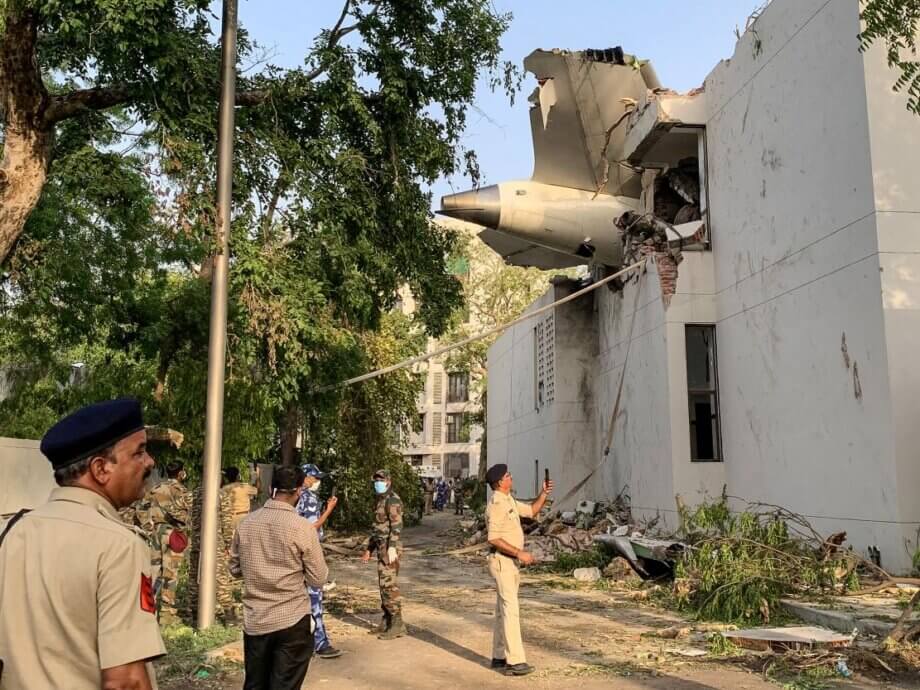The Chilling Discovery: What Happened on Air India Flight 171?
On a clear June morning, Air India Flight 171—a Boeing 787 Dreamliner—lifted off from Ahmedabad, India, bound for Mumbai. Less than a minute later, the aircraft crashed into a crowded neighborhood, killing all 260 people on board and several on the ground. The tragedy has become one of India’s most baffling aviation disasters, and the preliminary investigation has raised more questions than answers, especially after the release of cockpit audio that hints at a mysterious and potentially catastrophic error in the cockpit.
- The Chilling Discovery: What Happened on Air India Flight 171?
- How Did the Crash Unfold?
- The Cockpit Audio: A Puzzling Exchange
- Could It Have Been a Mechanical or Electronic Failure?
- Emergency Systems: The Ram Air Turbine and Landing Gear
- Human Factors: The Pilots and Their Actions
- What Are the Broader Implications for Aviation Safety?
- Lessons from Past Aviation Disasters
- What Happens Next in the Investigation?
- In Summary
How Did the Crash Unfold?
According to the preliminary report, the 12-year-old Boeing 787 climbed to just 625 feet before disaster struck. Both of the aircraft’s fuel-control switches—critical levers that regulate the flow of fuel to the engines—were abruptly moved to the cut-off position. This action starved both engines of fuel, causing a total loss of power. The switches were then quickly returned to their normal position, triggering the engines’ automatic relight systems. However, the aircraft was already in a perilous state: one engine was regaining thrust, while the other had relit but had not yet recovered power. The plane lost altitude rapidly and crashed, leaving investigators and the public searching for answers.
What Are Fuel-Control Switches and Why Are They Important?
Fuel-control switches are designed to be fail-safe. They are protected by locking mechanisms and guard brackets to prevent accidental activation. To move them to the cut-off position, a pilot must deliberately pull up and flip the switch—a process that is almost impossible to do accidentally, especially with both switches at once. These switches are typically only set to cut-off after landing, when the engines are being shut down.
As Shawn Pruchnicki, a former airline accident investigator and aviation expert at Ohio State University, explained,
“If one of the pilots was responsible for shutting down the switches, intentionally or not, it does beg the question: why? Was it intentional, or the result of confusion? That seems unlikely, as the pilots reported nothing unusual.”
The Cockpit Audio: A Puzzling Exchange
The cockpit voice recorder (CVR) captured a brief but chilling exchange between the pilots. Just after the engines lost power, one pilot asked the other why he had moved the fuel switches to cut-off. The other pilot replied that he had not. The recording does not clarify which pilot said what, and there is no further discussion about the switches. At the time, the co-pilot was flying the aircraft, while the captain was monitoring.
Peter Goelz, a former managing director of the US National Transportation Safety Board (NTSB), commented on the significance of this finding:
“The finding is very disturbing—that a pilot has shut off the fuel switch within seconds of flying. There’s likely much more on the cockpit voice recorder than what’s been shared. A lone remark like ‘why did you cut off the switches’ isn’t enough.”
Investigators are now working to identify which pilot’s voice is which, a process that typically involves people familiar with the pilots listening to the recording. This identification is crucial to understanding the sequence of events and determining responsibility.
Could It Have Been a Mechanical or Electronic Failure?
The design of the fuel-control switches makes accidental activation highly unlikely. However, the investigation has uncovered a potential issue: in December 2018, the US Federal Aviation Administration (FAA) issued a Special Airworthiness Information Bulletin (SAIB) noting that some Boeing 737 fuel control switches had been installed with the locking feature disengaged. The same switch design is used in the Boeing 787-8, including the aircraft involved in the crash. The SAIB was advisory, and Air India did not perform the recommended inspections, as the issue was not deemed an unsafe condition requiring a mandatory Airworthiness Directive.
Shawn Pruchnicki raised the possibility of a mechanical fault:
“Could the switch just flip itself to off and shut down the engine? If that’s the case, it’s a really serious issue.”
However, other experts, such as Capt Kishore Chinta, a former investigator with India’s Aircraft Accident Investigation Bureau, have questioned whether the switches could have been triggered electronically by the aircraft’s electronic control unit, rather than by physical movement.
So far, no evidence has emerged of fuel contamination or mechanical failure. Fuel samples from the refueling tanks were satisfactory, and no advisories have been issued for the Boeing 787 or its GE GEnx-1B engines. The investigation continues to focus on the possibility of an electronic or design-related failure.
Emergency Systems: The Ram Air Turbine and Landing Gear
Another key finding from the investigation was the deployment of the aircraft’s Ram Air Turbine (RAT). The RAT is a small propeller that extends from the underside of the Boeing 787 in emergencies, providing limited electrical and hydraulic power when both engines lose power. Its deployment is a clear sign of a major systems failure. Additionally, the landing gear was found in the down position, indicating that the pilots had no time to retract it after takeoff—a process that usually completes by around 400 feet of altitude.
A Boeing 787 pilot explained the likely mindset of the crew in those final moments:
“When both engines fail and the aircraft starts going down, the reaction goes beyond just being startled—you go numb. In that moment, landing gear isn’t your focus. Your mind is on one thing: the flight path. Where can I put this aircraft down safely? And in this case, there simply wasn’t enough altitude to work with.”
Human Factors: The Pilots and Their Actions
Both pilots and the crew had passed breathalyzer tests and were cleared fit to fly. They had arrived in Ahmedabad the day before and had adequate rest. There was no indication of fatigue, impairment, or unusual stress. The cockpit voice recorder did not capture any discussion of confusion or emergency prior to the incident, making the sudden movement of the fuel switches even more perplexing.
Investigators are now calling for the installation of cockpit video recorders, as recommended by the NTSB. A video recording would provide an over-the-shoulder view of the cockpit, showing exactly whose hand was on the cut-off switch at the critical moment. This technology, while controversial due to privacy concerns, could be invaluable in resolving cases where audio evidence is inconclusive.
What Are the Broader Implications for Aviation Safety?
The Air India Flight 171 crash has reignited debates about cockpit safety, human factors, and aircraft design. The incident highlights the importance of robust safety systems and the need for continuous vigilance in monitoring and maintaining critical components. It also underscores the challenges investigators face when key evidence is ambiguous or incomplete.
Some of the broader questions raised by the crash include:
- Should cockpit video recorders become standard equipment on commercial aircraft?
- Are current safety mechanisms on critical controls, such as fuel switches, sufficient to prevent accidental or unauthorized activation?
- How can investigators ensure accurate voice identification in cockpit recordings?
- What role do electronic control systems play in potential failures, and how can they be better monitored?
Families of the victims have expressed frustration with the lack of clear answers in the preliminary report. They continue to seek closure and hope that the final investigation will provide a definitive explanation for the tragedy.
Lessons from Past Aviation Disasters
The Air India Flight 171 crash is not the first time investigators have faced mysteries in the cockpit. Past aviation disasters, such as the crash of Air France Flight 447 in 2009 and the disappearance of Malaysia Airlines Flight 370 in 2014, have shown how difficult it can be to reconstruct the final moments of a flight when evidence is limited or ambiguous.
In the case of Air France 447, it took years of analysis and the recovery of the flight data recorders from the ocean floor to determine that pilot confusion and instrument failure led to the crash. The Malaysia Airlines case remains unsolved, with only partial wreckage ever found. These incidents have driven improvements in flight data recording, pilot training, and aircraft design, but they also serve as reminders of the limits of current technology and the complexity of human-machine interactions in aviation.
What Happens Next in the Investigation?
The investigation into Air India Flight 171 is ongoing. Authorities are working to produce a full transcript of the cockpit voice recording, with speakers identified, and to review all communications from the moment the plane was pushed back from the gate to the time it crashed. They are also examining the aircraft’s electronic systems, maintenance records, and any possible design flaws in the fuel-control switches.
International experts from Boeing, General Electric, Air India, Indian regulators, and agencies from the US and UK are participating in the investigation. Their findings will not only determine the cause of this crash but may also lead to changes in aviation safety standards worldwide.
In Summary
- Air India Flight 171 crashed shortly after takeoff, killing 260 people, after both engines lost power due to the fuel-control switches being moved to cut-off.
- The cockpit audio captured a mysterious exchange between the pilots, with neither admitting to moving the switches.
- Investigators are considering mechanical, electronic, and human factors, but have not yet determined the cause.
- The crash has raised questions about cockpit safety, the adequacy of current safety mechanisms, and the need for cockpit video recorders.
- The investigation is ongoing, with families of the victims seeking clear answers and closure.




